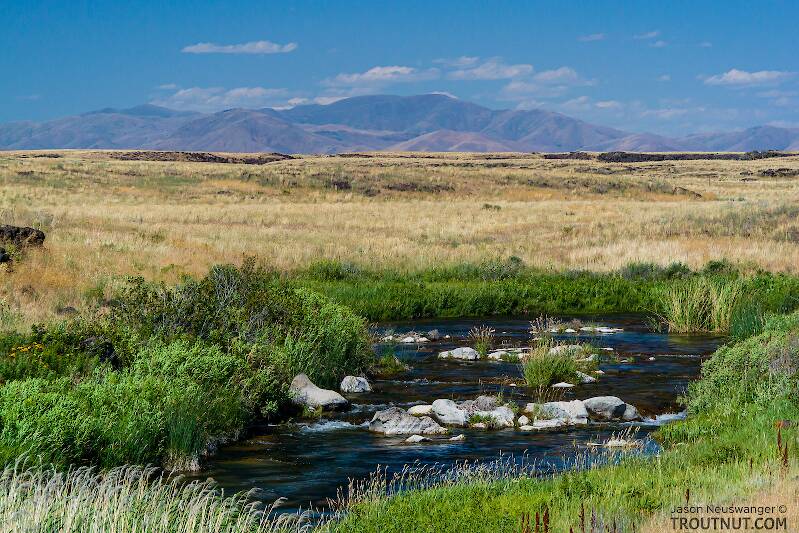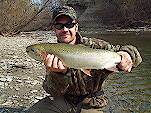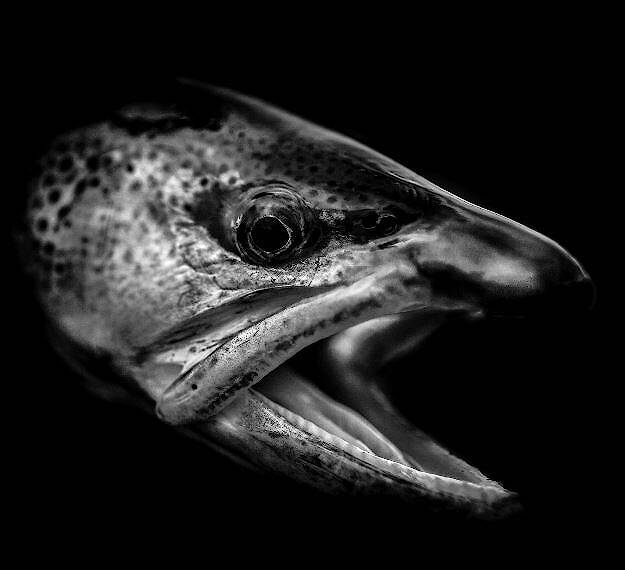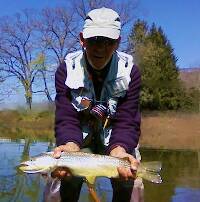
Salmonflies
Pteronarcys californica
The giant Salmonflies of the Western mountains are legendary for their proclivity to elicit consistent dry-fly action and ferocious strikes.
Featured on the forum

This one was surprisingly straightforward to identify. The lack of a sclerite at the base of the lateral hump narrows the field quite a bit, and the other options followed fairly obvious characteristics to Clostoeca, which only has one species, Clostoeca disjuncta.

Troutnut is a project started in 2003 by salmonid ecologist Jason "Troutnut" Neuswanger to help anglers and
fly tyers unabashedly embrace the entomological side of the sport. Learn more about Troutnut or
support the project for an enhanced experience here.
Powderfinge on Jan 8, 2017January 8th, 2017, 11:22 pm EST
hello, new here. what are your most realistic and effective patterns?
thanks to all!!!
thanks to all!!!
PABrownie on Jan 9, 2017January 9th, 2017, 12:55 am EST
Grannom soft hackle!
I don't even use adult patterns anymore, I cant keep fish off of the soft hackle when grannoms are hatching, seriously!
I don't even use adult patterns anymore, I cant keep fish off of the soft hackle when grannoms are hatching, seriously!
PaulRoberts on Jan 9, 2017January 9th, 2017, 2:58 am EST
Here's a dry I've done well with during Grannom activity:
http://www.troutnut.com/topic/7985/Caddis-Wing
http://www.troutnut.com/topic/7985/Caddis-Wing
Powderfinge on Jan 9, 2017January 9th, 2017, 9:05 pm EST
great paul. being that pic have various hues, what color goose do you use?
same for the body dub. looks yellow/green in one shot, very brown in another,,,thanks
same for the body dub. looks yellow/green in one shot, very brown in another,,,thanks
Wbranch on Jan 9, 2017January 9th, 2017, 10:56 pm EST
Oh no, not the deadly Grannom thread for the umpteenth time!!
Catskill fly fisher for fifty-five years.
PaulRoberts on Jan 10, 2017January 10th, 2017, 12:56 am EST
It's wild Canada goose. It's all shades of tan-gray. I've tinted some with Pantone pens, but I'm not sure it's necessary, esp for Grannom adults. They can be very active on the water and the buoyancy of the fly mimics them pretty well. I've done well with this pattern as far apart as the Beaverkill and Gunnison.
PaulRoberts on Jan 10, 2017January 10th, 2017, 12:58 am EST
Oh no, not the deadly Grannom thread for the umpteenth time!!
Matt, you've been here a long time and can probably remember most good threads on here -maybe even recite them verbatim! :) Let the new guy ask his question. :) And yes, he should know there is a LOT archived here in past threads. Powderfinge, do search back, there's a treasure trove of discussion here.
Wbranch on Jan 10, 2017January 10th, 2017, 11:45 am EST
Sorry for my abruptness! Diplomacy is not one of my stronger suits since becoming a septuagenarian.
Of which Grannom do thou speaketh? The one with the blackish body and mottled dark wings or the Apple caddis with the apple green body and light colored wings. Both are found in many Catskill waters but I'm not sure the Apple caddis is indigenous to the LJ.
Of which Grannom do thou speaketh? The one with the blackish body and mottled dark wings or the Apple caddis with the apple green body and light colored wings. Both are found in many Catskill waters but I'm not sure the Apple caddis is indigenous to the LJ.
Catskill fly fisher for fifty-five years.
Martinlf on Jan 10, 2017January 10th, 2017, 1:23 pm EST
No apple caddis on the LJ. Paul, thanks for bumping up that thread. I'd forgotten some of the ideas there that I'd planned to try out. So much to tie, such little time.
"He spread them a yard and a half. 'And every one that got away is this big.'"
--Fred Chappell
--Fred Chappell
Powderfinge on Jan 16, 2017January 16th, 2017, 10:56 am EST
no offense taken. my friends never ask what i'm thinking, I just said it. appreciate all the help/tips dudes.....
Quick Reply
Related Discussions
Topic
Replies
Last Reply
0
May 6, 2011
by Jtberez
by Jtberez
5
Jan 10, 2017
by Martinlf
by Martinlf
3
Dec 22, 2007
by Creno
by Creno







